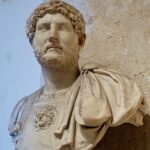In ancient Rome, the ritual suovetaurilia was practised, consisting in sacrificing to the god of war, Mars a pig (sus), sheep (ovis) and a bull (taurus). In this way, they wanted to gain his support and purify the earth – the so-called lustratio.
This rite was also called suovitaurilia and we know about its existence thanks to the message Cato the Elder in the work “De Agri Cultura”. During the ceremony, three animals were led around the ground to be cleansed, reciting the text of the oath as they went. After completing the circumnavigation of the earth, the animals were sacrificed and it was judged whether the deity “accepted” the sacrifice. The signs were usually divination from the entrails of animals.
Suovetaurilia took place both in the private and public spheres. Private individuals initiated the rite to cleanse their land, and they usually did so in May, during the festival of Ambarvalia,, which was supposed to go around the field.
In the public sphere, the rite was practiced during village holidays, to validate the census or to atone for errors in performing rituals. Typically, suovetaurilia occurred every 5 years; the break was called lustrum.
The ordinance was also performed when the temple was destroyed and a new tabernacle was to be erected in its place. Suovetaurilia was carried out, for example, in 69 CE, when the Capitol burned down during the fight for the Roman throne. The ritual also sometimes took place before the troops set off on a serious military campaign – it was, e.g. before Trajan invaded Dacia.







